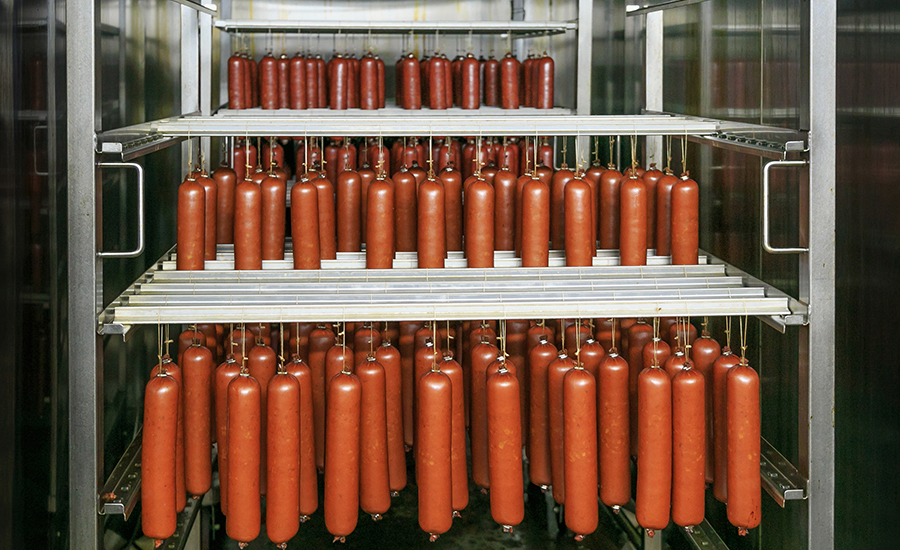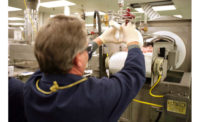Optimizing cooling for ideal efficiencies

While processors are expecting new guidance on cooling, implementation of the U.S. Department of Agriculture’s Food Safety and Inspection Service’s (FSIS) revised Appendix A and B published in 2017 has been delayed. Instead, processors have been allowed to revert back to the 1999 versions.
While Appendix A and B are guidance documents and not regulations, they are the most thorough guidance currently available for cooling and cooking, and versions have been utilized since the ’70s, says Jeff Sindelar, a professor of meat science and animal biologics discovery at the University of Wisconsin, in Madison. FSIS’ updated versions are expected soon, but revisions have been delayed to allow for research and to work through the challenges in the 2017 version.
For example, two of the big outliers in the 2017 version in regards to cooling are changing the cooling parameters for uncured products and eliminating one of the cooling options. Historically, two primary options for cooling uncured products existed, with one option cooling from 130 to 80 degrees Fahrenheit in one and a half hours and 80 to 40 degrees Fahrenheit in an additional five hours. That option is proposed to be reduced to 120 to 80 degrees Fahrenheit in one hour and 80 to 40 degrees Fahrenheit in an additional five hours.
Another option, in which processors could cool their products from 120 to 55 degrees Fahrenheit in no more than six hours was being eliminated in the 2017 version. This is of concern for processors of larger-diameter products, such as those trying to cool 5- or 6-inch products. “It’s thermodynamically impossible to cool those products given the options that were currently outlined in the 2017 version of Appendix B,” Sindelar says.
While research into FSIS’ guidelines continues, processors continue to have a greater understanding of cooling equipment and process controls to monitor and adjust cooling and freezing processes, Sindelar says.
For example, Lynvel Johnson, a consultant with HACCP Consulting Group, in Alexandria, Va., sees smaller plants that don’t have a large number of coolers putting liquid products into smaller or shallow containers to cool products quicker. For plants cooling large-mass muscle products, processors choose optimum spacing and use fans to increase wind velocity. Processors also schedule production as to not overload coolers and rotate product through the coolers as it cools. Processors must operate as efficiently as possible because of the large capital investment to build more coolers, Johnson says.
Additionally, processors have been more interested in freezing product for ideal slicing. For example, with bacon, the fat portion slices very differently than the lean portion. To optimize slicing, processors have found value in chilling the product to the ideal temperature for the most efficient slicing. “Freezing tempering equipment today is able to do that to focus on achieving an ideal product condition for slicing by setting programs and then having those programs track the product so that the product gets to … ideal conditions in the most efficient means,” Sindelar explains.
Moving forward, Sindelar expects processors will have continued interest in understanding how to align refrigeration and freezing systems and technologies to specific products. “Rather than a one-size-fits-all, how can establishments customize and tailor refrigeration and freezing systems to specific products, then how did that, of course, not only impact food safety, but how does it also impact economic attributes, including minimize shrink, or moisture loss from shrink, or improving slicing or improving some other quality or economic attribute,” Sindelar says.
Johnson also thinks more plants will adopt smart technology that warns when processes are failing along with keeping records, data points, and monitoring how coolers are operating.
Artwork
Something like: https://www.gettyimages.com/detail/photo/sausage-at-cooling-house-butchery-royalty-free-image/486578573?adppopup=true
Looking for a reprint of this article?
From high-res PDFs to custom plaques, order your copy today!










